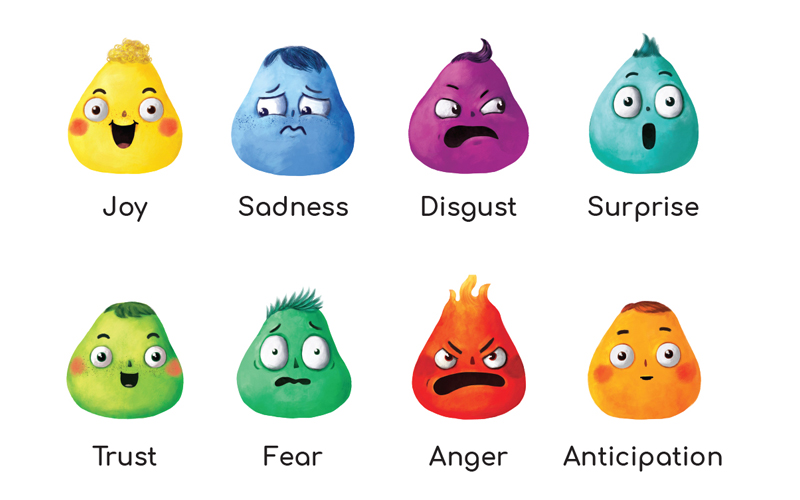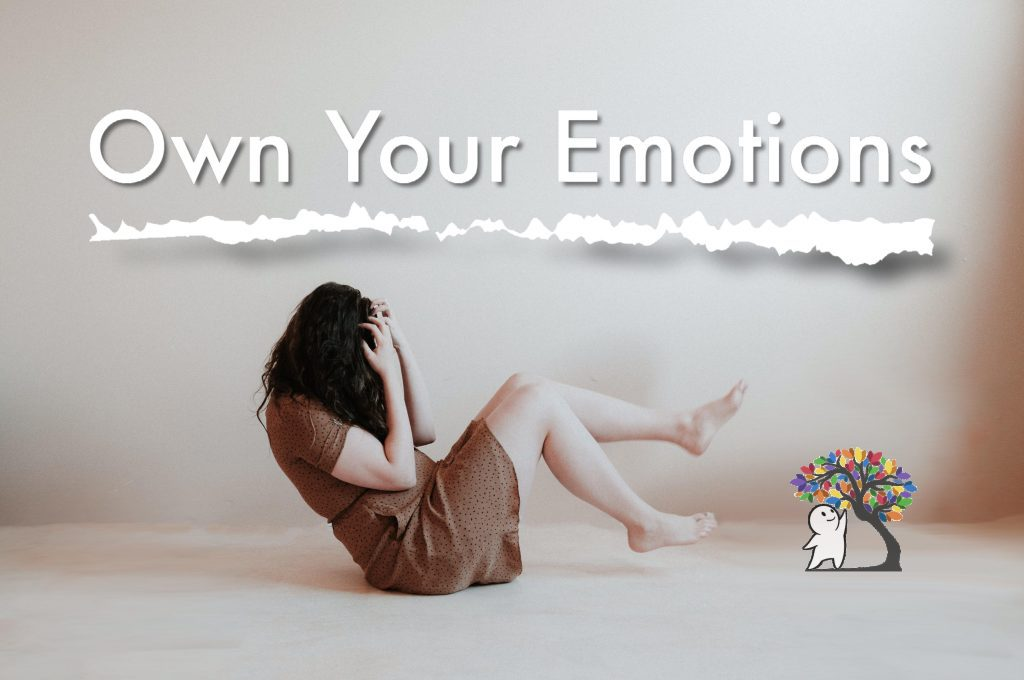
Understanding Emotional Control and the Power of Not Reacting
In today’s world, where stress, uncertainty, and rapid changes are part of daily life, emotional control is an invaluable skill. Many people struggle with controlling their emotions, especially in moments of intense stress or conflict. Losing control and reacting impulsively can lead to misunderstandings, broken relationships, and regrets. This article dives into the importance of mastering non-reactivity and outlines 12 transformative habits that can help you navigate difficult emotions and improve your relationships. By learning these habits, you can build resilience, make better decisions, and achieve a sense of calm even in challenging situations.
Habit 1: Practice the Chemical Countdown

The Chemical Countdown is a technique that involves taking a moment to pause and count down from five. This simple exercise can help your brain process emotions and give you a moment to step back before reacting.
Why It Works:
- When we’re stressed, the brain releases chemicals like adrenaline, which heightens emotions. Counting down gives these chemicals a chance to settle.
How to Use It:
- Close your eyes, breathe deeply, and count down from five. This helps dissipate the rush of chemicals, allowing you to respond more calmly and rationally.
Benefits:
- Allows you to avoid hasty, regretful reactions
- Provides mental clarity to handle the situation more constructively
Habit 2: Identify the Root Cause of Emotions

Emotions often have deeper roots. Taking the time to identify why you feel a certain way can prevent impulsive reactions. Reflecting on the true source of your emotions provides insight into what’s truly bothering you.
Steps to Practice:
-
- When you feel a strong emotion, ask yourself why. Dig deeper to identify the underlying cause.
- For example, if someone’s comment made you angry, think about why it affected you. Was it insecurity? A fear of failure?
Benefits:
- Reduces emotional reactivity by addressing the root issue
- Builds emotional intelligence
Habit 3: Resolve Unresolved Resentment

Resentment is a powerful emotion that can cloud judgment and lead to prolonged conflicts. By addressing and releasing resentment, you can prevent it from controlling your actions.
How to Manage Resentment:
-
- Make it a habit to address conflicts directly instead of letting them simmer.
- Practice forgiveness for yourself and others, as holding onto grudges often harms you more than the other person.
Benefits:
- Prevents resentment from influencing future reactions
- Promotes healthier relationships by addressing and releasing negative feelings
Habit 4: Name Your Emotions

Naming emotions is a powerful tool for understanding and processing them. By acknowledging what you’re feeling, you can create a sense of control over your emotional state.
How to Use Naming:
-
- When you feel overwhelmed, take a moment to label each emotion, such as “anger,” “frustration,” or “sadness.”
- This technique helps clarify your feelings, making them easier to manage.
Benefits:
- Clarifies complex emotions and reduces mental overwhelm
- Makes emotions feel less overpowering by turning them into manageable concepts
Habit 5: Practice Regular Stress Management

Stress is a significant factor that impacts emotional control. Building daily habits that manage stress, like meditation, exercise, or writing, can improve your ability to handle emotions.
Stress Management Techniques:
-
- Exercise: Physical activity is a proven stress-reliever and boosts mood.
- Meditation: Taking time to clear your mind enhances focus and emotional balance.
- Journaling: Writing down your thoughts and feelings can prevent emotional build-up.
Benefits:
- Promotes emotional resilience and reduces reactivity
- Improves overall well-being, making it easier to control emotions
Habit 6: Create Opportunities for Emotional Expression

Bottling up emotions can lead to explosions later on. Finding constructive outlets to express emotions, like talking to someone you trust or journaling, can prevent this buildup.
Expression Techniques:
-
- Set aside time to write or talk about your feelings to release pent-up emotions.
- Consider creative activities, like drawing or dancing, to channel emotions in healthy ways.
Benefits:
- Prevents emotional outbursts by regularly releasing pent-up feelings
- Increases self-awareness through regular emotional expression
Habit 7: Channel Your Feelings Productively

Instead of letting emotions control you, use them as motivation. Whether through physical activity, creativity, or productive tasks, channeling emotions constructively can transform negative energy into positive action.
How to Channel Emotions:
-
- Use anger or frustration as fuel for a workout, painting, or solving a problem.
- Focus on channeling emotions into activities that uplift your mood or add value.
Benefits:
- Turns potentially destructive emotions into constructive energy
- Helps avoid unproductive reactions by engaging in positive outlets
Habit 8: Practice the Empathy Routine

Empathy allows you to see things from others’ perspectives, reducing anger and increasing understanding. Practicing empathy can help you approach conflicts with a more balanced and compassionate mindset.
How to Practice Empathy:
-
- When in a conflict, try to consider the other person’s point of view.
- Ask yourself how you would feel if you were in their shoes, which can create mutual understanding.
Benefits:
- Reduces feelings of anger and resentment
- Promotes open communication and strengthens relationships
Habit 9: Take Ownership of Your Emotions

Acknowledging and accepting your emotions, rather than ignoring or suppressing them, is essential. By owning your emotions, you can approach situations more calmly and responsibly.
Taking Ownership:
-
- Instead of blaming others, focus on how you’re feeling and take steps to address it constructively.
- Accepting emotions gives you control over them, allowing you to choose your responses.
Benefits:
- Increases self-awareness and emotional resilience
- Promotes a proactive, rather than reactive, approach to emotional situations
Habit 10: Know Your Boiling Point

Understanding your limits helps you avoid reaching the point of losing control. Recognizing signs of frustration or anger early on allows you to take a break before things escalate.
Identifying Triggers:
-
- Pay attention to physical cues like clenched fists, increased heart rate, or tense muscles.
- If you notice these signals, take a moment to remove yourself from the situation if possible.
Benefits:
- Prevents regretful outbursts by allowing for timely exits
- Helps maintain composure by recognizing triggers before they escalate
Habit 11: Create a Personal Mantra

A mantra can serve as a reminder of your commitment to staying calm and focused during difficult situations. It helps bring you back to your core values, reminding you to act with purpose rather than impulsivity.
Creating Your Mantra:
-
- Choose a simple phrase that resonates, like “Stay calm” or “I am in control.”
- Repeat this mantra when you feel emotions rising to regain focus.
Benefits:
- Reinforces positive behavior by grounding you in your values
- Provides immediate mental clarity in moments of emotional intensity
Habit 12: Use Breathing Techniques for Emotional Stability

Breathing exercises activate the body’s relaxation response, helping to restore calm and clarity. Deep breathing can instantly reduce stress and promote a sense of control over emotions.
Breathing Techniques:
-
- Try box breathing: Inhale for four counts, hold for four, exhale for four, and hold for four.
- Practice deep belly breathing, which engages the diaphragm and promotes relaxation.
Benefits:
- Reduces stress and anxiety almost instantly
- Allows you to stay grounded, calm, and focused during tense situations
Final Takeaway: Embrace the Power of Emotional Control
Learning to control emotions isn’t about suppressing or ignoring them. Instead, it’s about developing the skill of non-reactivity, which enables you to respond to challenges thoughtfully and maintain harmony in your relationships. By integrating these 12 habits into your daily life, you can develop resilience, strengthen your relationships, and make decisions with a clear mind. Over time, you’ll find yourself experiencing fewer conflicts, greater emotional stability, and enhanced personal growth.















